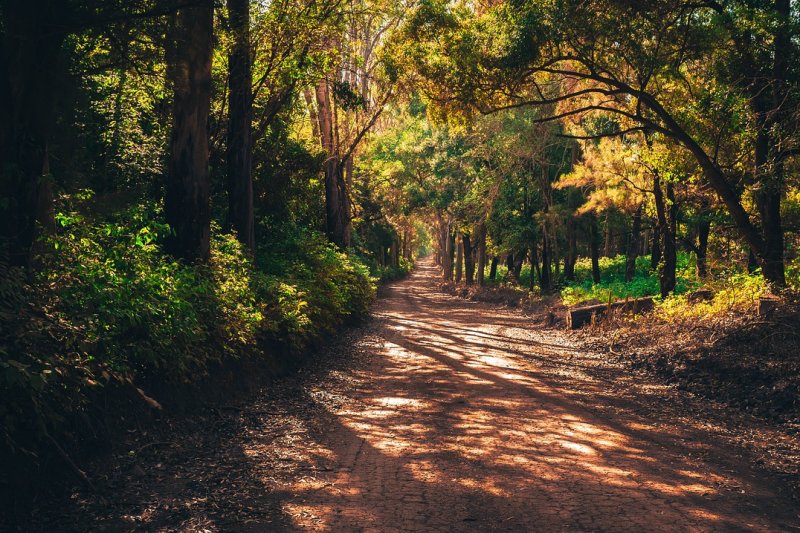
With about 60% of Earth's land degraded on some level, researchers say the remaining 40% is not connected enough and threatens the survival of scores of species. Photo by FabricioMacedoPhotos/Pixabay
Sept. 11 (UPI) -- Even as humans carve out and protect significant swaths of terrestrial habitat, the rest of Earth has become increasingly degraded, leaving the planet's protected areas disconnected.
According to a new study, more than 90% of Earth's protected areas are disconnected -- surrounded by human pressures -- according to a study published Friday in the journal Nature Communications.
"Connected landscapes ensure species can move through a landscape," lead study author Michelle Ward told UPI in an email.
"Species travel for many reasons including seasonal migrations, finding a mate, moving away from close relatives to ensure genetic diversity, escaping natural disasters such as fires, or tracking their preferred climates," said Ward, an environmental scientist and doctoral candidate at the University of Queensland in Australia.
RELATED Tropical forests can continue to store carbon, even as the planet gets warmer
To quantify the problem of landscape disconnection, researchers relied on a map called the Human Footprint, which identifies the presence of multiple human pressures, including roads, railways, farmland, urban development, commercial development and more. The map scores a landscape's total pressure on a scale from 0 to 50.
On the Human Footprint, a score of zero suggests the land is relatively wild. A score of 4 or below suggests the land experience only minor human pressures. These landscapes contain most of their natural habitat and host healthy ecological processes.
"This threshold is what we call 'intact' and has been found to be robust from a species conservation perspective because once surpassed, species extinction risk increases dramatically, and several ecosystem processes are altered," Ward said.
To quantify the problem of landscape disconnection, researchers relied on a map called the Human Footprint, which identifies the presence of multiple human pressures, including roads, railways, farmland, urban development, commercial development and more. The map scores a landscape's total pressure on a scale from 0 to 50.
On the Human Footprint, a score of zero suggests the land is relatively wild. A score of 4 or below suggests the land experience only minor human pressures. These landscapes contain most of their natural habitat and host healthy ecological processes.
"This threshold is what we call 'intact' and has been found to be robust from a species conservation perspective because once surpassed, species extinction risk increases dramatically, and several ecosystem processes are altered," Ward said.
RELATED Climate change could push animal species into new rivalries
According to the Human Footprint, 40% of Earth's land remains intact, while the remaining 60 percent is relatively degraded.
When researchers looked at the distribution of intact land, they found it rarely forms a bridge between protected areas.
"If two protected areas have 'intact' land in between them, we define those two protected areas as connected," Ward said. "While this kind of structural connectivity alone does not guarantee connectivity for all species, high levels of landscape connectedness is seen as critical for species in regards to migration, escaping natural disasters, and adaptation under human-induced climate change."
RELATED Scientists move to create single, comprehensive list of Earth's living species
Their analysis, showed just 9.7% of the world's protected areas are connected.
To protect Earth's biodiversity and important ecological processes, authors of the latest study argue more must be done to connect the planet's protected areas. That means safeguarding still-intact landscapes and restoring landscapes that can connect isolated pockets of wild habitat.
Members of the United Nations have pledged to restore 865 million acres of degraded land by 2030, but researchers suggest such efforts must be executed strategically.
Their analysis, showed just 9.7% of the world's protected areas are connected.
To protect Earth's biodiversity and important ecological processes, authors of the latest study argue more must be done to connect the planet's protected areas. That means safeguarding still-intact landscapes and restoring landscapes that can connect isolated pockets of wild habitat.
Members of the United Nations have pledged to restore 865 million acres of degraded land by 2030, but researchers suggest such efforts must be executed strategically.
"We argue that these types of restoration goals should be framed within a broader connectivity agenda and specifically planned to maximize the quality of the landscape matrix between protected areas, as well as degraded land inside protected areas essential to biodiversity outcomes," Ward said.
No comments:
Post a Comment